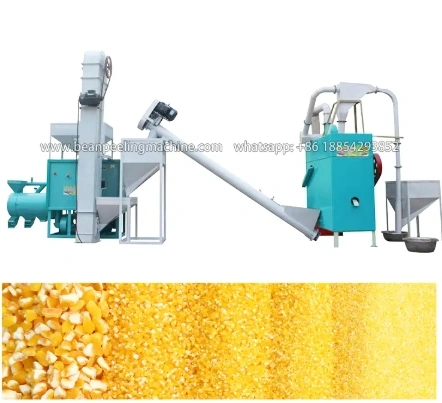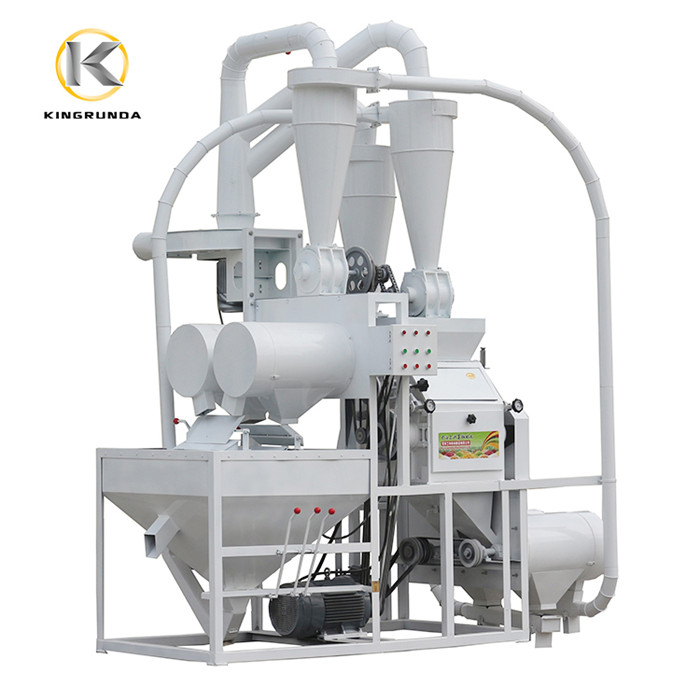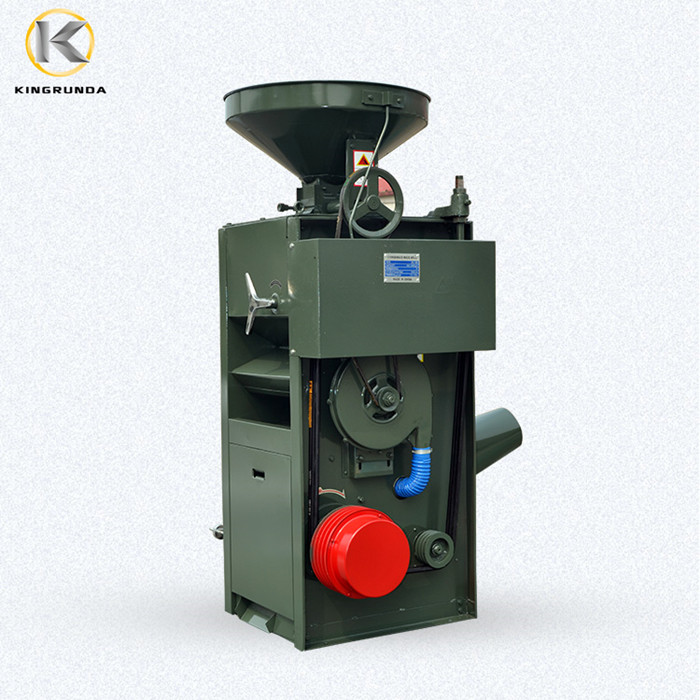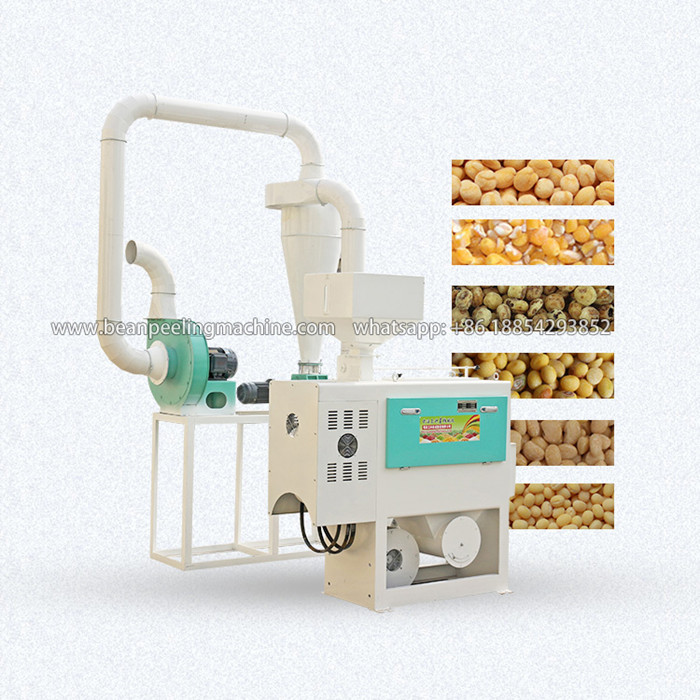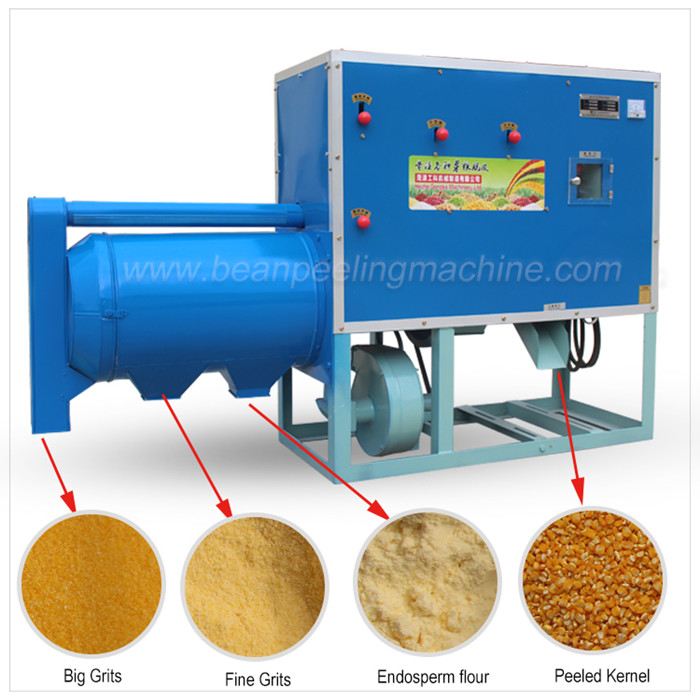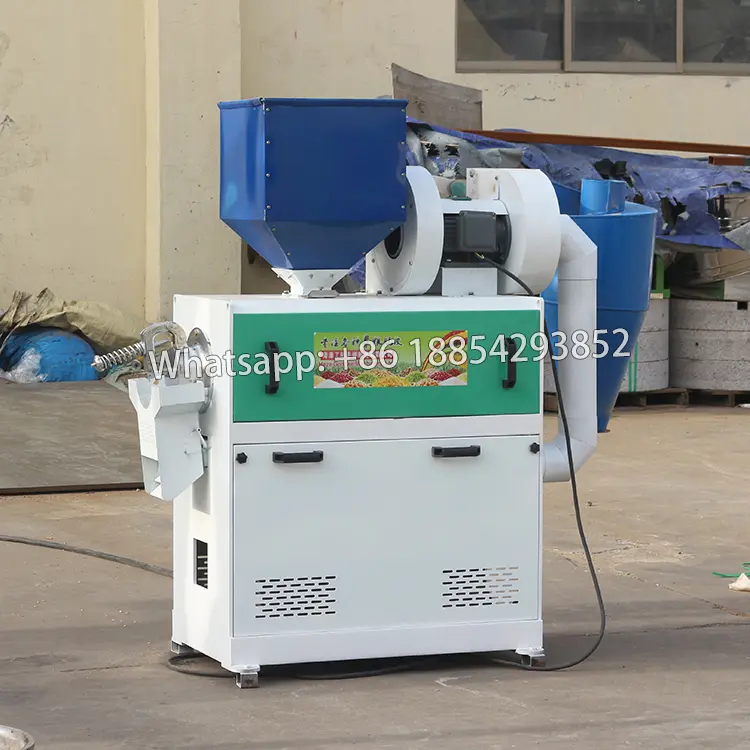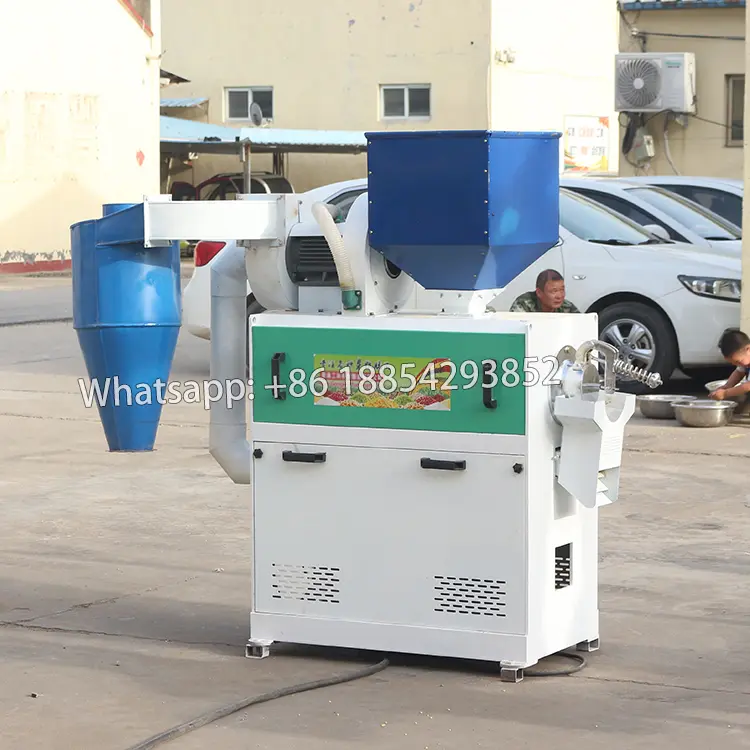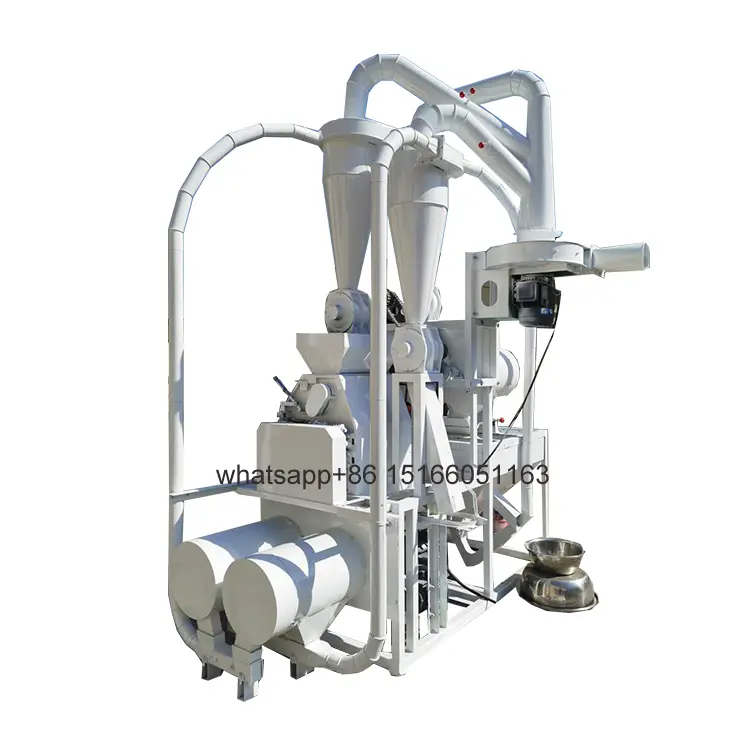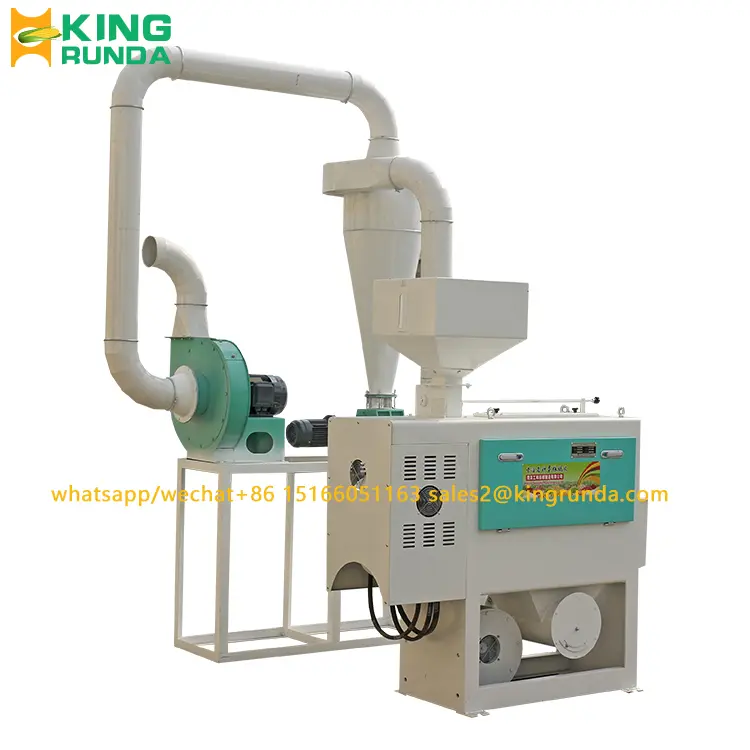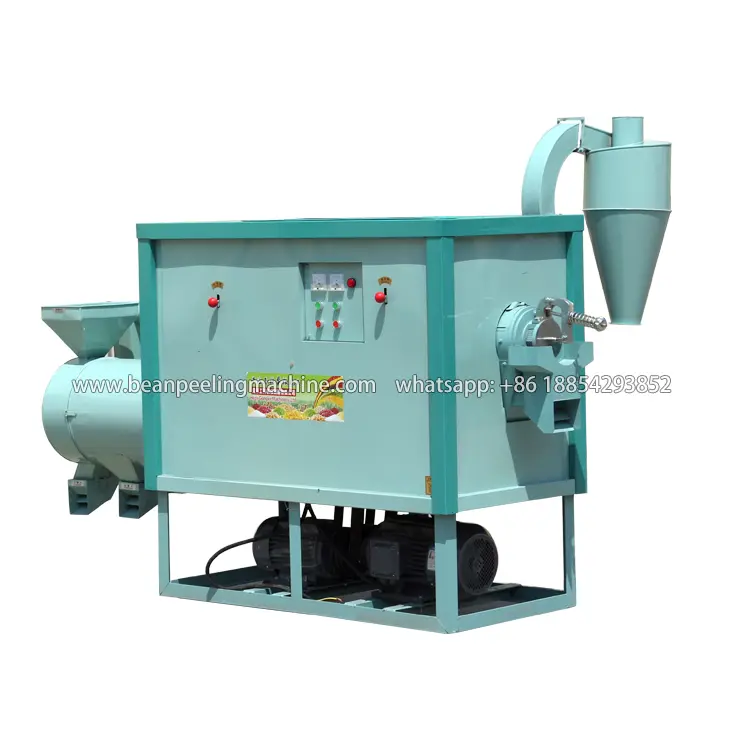Maize (corn) is a vital crop used globally for food, animal feed, and industrial products. One of the most important steps in processing maize is milling, and understanding the types of maize milling machines and their processes is key to maximizing both yield and value.
Two primary methods exist for maize milling: dry milling and wet milling. Each method requires a specific type of maize milling machine and delivers different end products. Let's explore both processes, their machinery, and how to choose the right one for your needs.
What Is Dry Milling?
Dry milling is a maize processing method that involves grinding maize kernels without soaking them in water. In this process, maize is first cleaned to remove any debris or impurities. Next, the maize undergoes a dehulling process, where the bran and germ are removed. After dehulling, the maize is ground into various products such as maize grits, flour, or meal, depending on the desired texture and end use.
Dry milling is commonly used in small to medium-scale processing plants and is the preferred method for producing a variety of food products like maize meal and flour. It is a mechanical process, which means it does not require the addition of water or other liquids. This makes it a simple and efficient method for maize processing.
Common Dry Milling Equipment:
Hammer Mills
Hammer mills are widely used for coarse grinding in dry milling. They work by using rotating hammers to break down the maize kernels into smaller particles. Hammer mills are often used for producing maize meal and grits.
Roller Mills
Roller mills are another popular type of equipment in dry milling. They provide a more refined grinding process compared to hammer mills. Roller mills use cylindrical rollers to crush and grind the maize kernels, offering better control over the final product’s texture.
Degerminators
Degerminators are machines specifically designed to remove the germ from maize kernels. The germ is separated because it contains oil, which could affect the storage and quality of the final product. Degerminators are crucial for ensuring high-quality maize products in dry milling.
Sifting Machines
Sifting machines are used to separate the ground material into different grades based on particle size. After the grinding process, sifting helps to classify the final products, allowing for the production of different types of flour, meal, or grits.
Key Products:
Maize Meal
Maize meal is a coarsely ground product that is commonly used for making porridge or traditional dishes in many parts of the world. It is one of the most popular products of dry milling.
Maize Grits
Maize grits are larger granules of maize that are often used in the production of breakfast cereals, snacks, or even in brewing. Grits are coarser than flour but finer than whole kernels.
Maize Flour
Maize flour is a finely ground product that is often used in baking, cooking, or as an ingredient in processed food products. It is commonly used for making tortillas, cakes, and bread.
Bran (Byproduct)
Bran is a byproduct of the dehulling process, and it is often used as animal feed or as a high-fiber ingredient in various food products.
Advantages:
Lower Initial Investment
One of the biggest advantages of dry milling is its lower startup cost. The equipment required for dry milling is generally less expensive than that used in wet milling, making it an affordable option for small to medium-scale operations.
Simpler Equipment and Maintenance
Dry milling equipment is simpler to operate and maintain. Since no water or chemicals are involved, the process is less complex and requires less training for operators. Maintenance is also less costly compared to wet milling systems.
More Energy-Efficient
Dry milling generally uses less energy compared to wet milling processes, as there are no water or heating systems involved. This makes it a more energy-efficient choice for maize processing.
No Wastewater Management Required
Since dry milling does not involve water, it does not produce wastewater that needs to be treated. This makes it more environmentally friendly and suitable for regions with limited access to water treatment facilities.
Disadvantages:
Lower Purity of End-Products
The biggest disadvantage of dry milling is that it produces less pure products. Unlike wet milling, which can separate maize into its individual components (starch, oil, protein), dry milling is limited in its ability to achieve this. The products may contain impurities or remain less refined.
Limited Ability to Separate Starch, Oil, and Protein
Dry milling is less effective in separating maize’s valuable components. While wet milling can extract high-purity starch, oil, and protein, dry milling cannot achieve the same level of separation. This limits the types of products that can be created, particularly for industrial purposes.
Generates More Dust (Requires Good Ventilation)
Dry milling produces more dust than wet milling, which can pose health risks to workers and reduce air quality in processing facilities. Proper ventilation and dust control systems are essential to ensure a safe working environment.
What Is Wet Milling?
Wet milling is a maize processing method that involves soaking maize kernels in water, often with the addition of sulfur dioxide, for a period of 24 to 48 hours. This soaking process softens the kernels, making them easier to break apart and separate into their core components: starch, protein, oil, and fiber. The goal of wet milling is to produce high-purity ingredients that can be used in a variety of industrial applications such as food production, pharmaceuticals, and biofuels.
Wet milling is a more complex process compared to dry milling and requires specialized equipment. It is most commonly used in large-scale industrial settings where high-value byproducts, such as corn oil and maize starch, are extracted for further use. The process allows for better separation of the different components of the maize kernel, making it ideal for industries that require pure or refined ingredients.
Common Wet Milling Equipment:
Soaking Tanks
The first step in the wet milling process is soaking the maize kernels in water, often combined with sulfur dioxide. Soaking tanks are used to hold the kernels during this process, which helps soften the maize and prepares it for the subsequent milling and separation stages.
Stone or Disc Mills
After soaking, the maize kernels are passed through stone or disc mills. These mills crush and grind the kernels to separate the germ, starch, and other components. Stone mills are particularly effective in gently grinding the kernels, ensuring that the germ is separated intact for oil extraction.
Centrifuges and Separators
After the kernels are ground, the components are separated using centrifuges and separators. These machines use centrifugal force to separate the heavier components, like starch, from the lighter ones, such as protein and oil. This step is crucial for achieving high-purity products.
Dryers
Once the different components have been separated, they are dried using dryers to reduce moisture content. Drying is necessary to preserve the products and make them suitable for storage and transportation.
Key Products:
Maize Starch
Maize starch is one of the primary products of wet milling. It is widely used in the food industry as a thickening agent and in the production of sweeteners, like high-fructose corn syrup. Maize starch is also a key ingredient in bioplastics and paper products.
Corn Oil (from Germ)
The germ of the maize kernel contains a significant amount of oil, which is extracted during the wet milling process. Corn oil is used in cooking, as well as in industrial applications such as biodiesel production and as an ingredient in various personal care products.
Gluten (Protein)
Gluten, which is the protein found in maize, is separated from the starch during the wet milling process. It is used in the production of high-protein food products, such as meat substitutes, and in animal feed.
Fermentation Products (e.g., Ethanol)
One of the most important uses of wet milling is the production of ethanol through fermentation. The starch extracted from maize is fermented to produce ethanol, which is used as a biofuel and in the production of alcoholic beverages.
Advantages:
High-Purity Separation of Starch, Germ, and Gluten
Wet milling offers a high degree of purity in the separation of maize’s components. Unlike dry milling, which does not efficiently separate the kernel’s components, wet milling produces high-purity starch, protein, and oil that can be used for specific applications in food, pharmaceuticals, and biofuels.
Essential for Industrial Uses (Bioplastics, Sweeteners, Ethanol)
Wet milling is a critical process for industries that rely on pure starch, oil, and protein. The products derived from wet milling, such as maize starch, are essential for producing bioplastics, sweeteners, and ethanol, all of which are high-demand commodities in modern manufacturing and energy production.
Generates High-Value Co-Products
In addition to the primary products like starch and oil, wet milling generates valuable co-products such as corn gluten and maize protein. These can be used as animal feed or further processed into protein concentrates for various industrial uses.
Disadvantages:
Higher Capital and Operational Costs
Wet milling involves a higher upfront investment in equipment and infrastructure compared to dry milling. The need for specialized machinery such as soaking tanks, disc mills, and centrifuges results in higher operational costs. Additionally, wet milling processes are more complex and require skilled labor.
Requires Water Treatment Systems
Because wet milling uses large amounts of water, it also requires water treatment systems to handle the wastewater generated during the process. These systems add to the operational cost and environmental impact of wet milling, especially in areas where water resources are limited.
More Complex Processing and Machinery
The wet milling process involves several stages and requires more intricate machinery, which makes it more complicated to manage compared to dry milling. It also demands more space and resources to set up and operate efficiently.
Wet milling offers several advantages for industrial processing, particularly in the production of high-purity ingredients. However, its higher capital costs, operational complexity, and environmental impact make it better suited for large-scale operations with specific production needs.
Dry Milling vs Wet Milling: Quick Comparison
| Feature | Dry Milling | Wet Milling |
|---|---|---|
| Pre-treatment | No soaking | Soaking required |
| Main products | Grits, flour, bran | Starch, oil, protein, ethanol |
| Equipment complexity | Low | High |
| Water use | Minimal | High |
| Ideal for | Food and feed production | Industrial processing |
| Cost | Lower | Higher |
Which Maize Milling Machine Is Right for You?
Choosing the right maize milling machine depends on your production goals, available infrastructure, scale, and budget. Whether you're a small-scale farmer, a food processor, or an industrial producer, understanding the differences between dry and wet milling systems is essential for making an informed investment.
Let’s break down the key decision-making factors—and how they relate to real-world needs.
1. What Is Your Purpose?
The first and most important question is: What do you want to produce?
Food-grade flour or maize meal (for tortillas, porridge, or baking):
→ Dry milling is typically more than enough.
Maize starch, ethanol, or corn oil for industrial use:
→ Wet milling is the better—and sometimes only—option, due to its ability to extract high-purity ingredients.
Example:
A small-scale food processor in Kenya producing maize meal for local markets can easily operate a dry milling plant using basic equipment like a hammer mill and a sifter. In contrast, a U.S.-based ethanol producer such as ADM or Cargill relies on wet milling to extract fermentable sugars from starch with high efficiency.
2. Scale of Operation
How much maize do you plan to process daily?
| Scale | Dry Milling Throughput | Wet Milling Throughput |
|---|---|---|
| Small-scale (farm level) | 0.5–1 ton/day | Not typically viable |
| Medium-scale (local processors) | 2–10 tons/day | Requires major investment |
| Industrial-scale | 20+ tons/day | Ideal for wet milling |
Dry milling equipment is modular and easier to scale up. You can start small and expand over time by adding extra units. Some community mills in sub-Saharan Africa process just 1 ton of maize per day and generate consistent income with dry milling machines.
Wet milling, on the other hand, is capital-intensive and generally only cost-effective at high volumes. Large wet milling plants typically process over 100 tons of maize per day.
3. Budget and Investment
Dry milling systems can cost anywhere from $5,000 to $50,000 depending on capacity and automation.
Wet milling systems start at around $200,000 and can reach millions of dollars when factoring in soaking tanks, separators, and wastewater treatment facilities.
Example:
A cooperative in Latin America might purchase a dry maize milling system for $12,000 that includes a hammer mill, degerminator, and sifting unit—enough to serve a village or small town. Meanwhile, a starch extraction plant in China may invest $3 million in a wet milling line that includes soaking, separation, drying, and ethanol fermentation systems.
4. Available Infrastructure
Water access and treatment: Wet milling requires large volumes of clean water and facilities for treating wastewater before disposal. If your region lacks consistent water access or regulations for wastewater discharge, dry milling is the more practical option.
Electricity and labor: Wet milling is more energy-intensive and usually requires skilled operators and engineers. Dry milling equipment is simpler and can be operated by trained technicians or even local entrepreneurs.
Which Machine Type Fits Which User?
| User Type | Recommended Milling | Reason |
|---|---|---|
| Smallholder farmer | Dry milling | Affordable and easy to operate |
| Local food processor | Dry milling | Produces food-grade flour and meal |
| Animal feed producer | Dry milling | Bran and coarse meal ideal for livestock |
| Ethanol plant | Wet milling | High starch yield required for fermentation |
| Corn oil or glucose syrup manufacturer | Wet milling | Purity of extracted components |
Long-Term Considerations
While dry milling has lower upfront costs and simpler operations, the product range is limited. You mostly get flour, grits, and bran. However, the return on investment is fast, often within 6–12 months for small operations.
Wet milling, though expensive to install, offers multiple revenue streams from starch, oil, gluten, and fermentation byproducts like ethanol or lactic acid. If you’re targeting global industrial markets, wet milling opens doors to high-margin opportunities.
Final Recommendation
If you're processing maize for human consumption (such as flour or meal), operating in a rural or semi-urban area, and looking for a cost-effective startup option:
→ Dry milling is your best choice.
If you're in industrial production, need high-purity starch or ethanol, and have access to funding, water systems, and skilled labor:
→ Wet milling is necessary.
Conclusion
Choosing between dry and wet maize milling comes down to your specific production goals, budget, and infrastructure. Dry milling offers simplicity, lower costs, and is ideal for food-grade flour or small-scale operations. Wet milling, while more complex and expensive, is essential for producing starch, oil, and ethanol at an industrial level. By understanding the advantages and limitations of each method, you can confidently invest in the maize milling machine that aligns with your business needs and long-term growth strategy. Our company manufactures and sells a wide range of maize milling machines for different processing needs. Whether you're starting small or running an industrial operation, we have the right solution for you. Feel free to contact us for expert advice, product details, and customized equipment recommendations.
